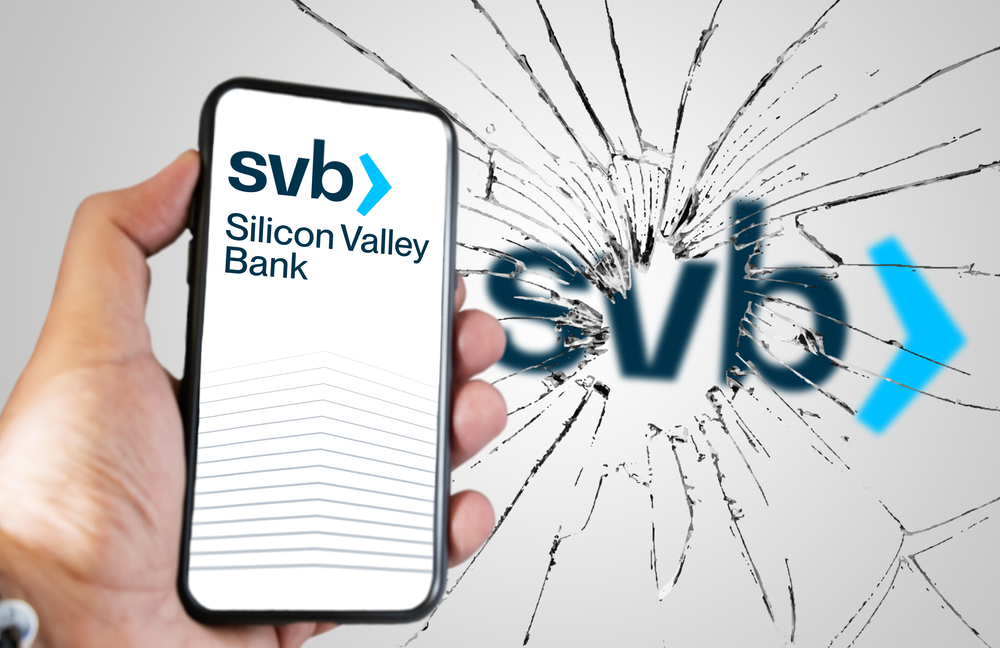
Is there a more fitting name for a bank that has taken on too much risk than “Silicon Valley Bank”? Now it has failed, but instead of taking down with it those most responsible, the federal government has stepped in to rescue its explicitly uninsured depositors. The Fed promised “no losses will be borne by the taxpayer,” but they have a funny definition of taxpayer that excludes remaining prudent banks now charged an increased “assessment” by the government—that is definitely not a tax.
The federal government is indeed partially responsible for this, playing its typical role as both arsonist and fireman—but not because of a failure of regulation. How many institutions are more regulated than a California bank? (Or to harken back, more regulated than saving and loans associations that failed by the thousand?) Regulators don’t have the insight or incentive to preempt such things but, alas, they have the power to make things worse.

Yes, we’ve got yet more moral hazard piled on as we constantly “privatize gains and socialize losses” through bailouts of the biggest risk-takers. But we also have the Federal Reserve artificially holding down interest rates for years in order to goose the economy and make it easier for the government to borrow. With interest rates rising toward market reality, now banks’ balance sheets don’t look so hot. And Silicon Valley Bank tried to outcompete (or just didn’t know what they were doing), taking on far too much risk by assuming low interest rates were forever and failing to hedge a change. A general solution is to get the Fed out of setting interest rates and let bankers figure it out on their own—but there will always be private actors who take on excess risk.
The bible of monetary policy—Walter Bagehot’s Lombard Street—says that it would be best not to have a central bank at all but, if you do have a lender of last resort—and this is its most famous advice—you lend freely at a high interest rate against good securities. Which is exactly what you’d expect a private lender to do with sufficient capital (indeed, in the United Kingdom at the time, the central bank was private). Illiquid banks get money. Insolvent banks don’t. Silicon Valley Bank tried to get private support and everybody with their own money on the line thought it was too risky. So the taxpayer—sorry, the assessment-payer—inherits the biggest problems in the system.
But what of the risk-takers themselves? Silicon Valley Bank’s executives rode the success all the way up and even sold millions of dollars of stock just before receivership. Now the government pledges that executives and owners are wiped out, but they get to keep all their old gains. A classic historical regulation that is the greatest induction to prudence that banking has ever seen is to have personal liability for executives and owners if their bank fails—let the creditors go after those who were responsible.
We are also talking about sophisticated business people putting their money in an insolvent bank, partially because they got extra yield or other fringe benefits. As the tech world bemoans finding out how many people are “rooting against tech”—or their woke ideology—they should realize that some of us are instead rooting for responsibility. We are relying on uninsured depositors to keep bankers honest. But apparently no more.
A traditional thought is that it’s a lie that money can be in two places at once (freely available to you in your checking account AND being lent out by the bank) and so therefore the reserve requirement ought to be not 10% but 100%. In such a situation, absent fraud, every bank is solvent. You have two options: you either have total access to your cash at any time (but probably have to pay for such safety, as you would if you stored money in a safe deposit box) OR you can buy bonds (where you get interest but you don’t have access).
Of course, in the unlikely event we moved back toward asset-backed currencies, a free banking system (especially its Scottish variety at the time of Adam Smith) has proved it can be self-policing even without reserve requirements—private actors then have personal reason to call out the irresponsibility of their peers. In the meantime, we will most likely suffer the vagaries of a system that both props up the government and robs capitalism of its most potent incentives—that anyone might both reap the rewards and suffer the consequences of their own actions.
Grant Starrett is a real estate investor in Murfreesboro, Tennessee. He received his BA in history from Stanford and a JD from Vanderbilt. His writing has been published in the Wall Street Journal, National Review, etc. and he also writes book reviews every couple weeks for a substack distributed through GrantReadsBooks.com

READER COMMENTS
Thomas Lee Hutcheson
Mar 19 2023 at 7:46am
Mr Starret seem to believe the those MOST responsible for the failure of SVB were the depositors.
No those MOST responsible were there the management that chose to invest uninsured deposits funds in fixed-rate instruments and the stockholders who hired them.
Next in line are the regulators who allowed the interest rate mismatch. (This is not a mater or under- or over-regulation but MIS regulation).
Following is the Fed for delaying to act against inflation for too long and so had to act “too fast when it finally did act. [My guess, possible wrong, is that starting to raise the FF rate in Sept 2021 instead of March 2022 would mean that inflation and the FF rate today would be lower.]
Far behind as a cause of THIS hiccough is fiscal policy since …. which has allowed structural deficits which are bad for growth but don’t have much to do with the SVB failure.
AImas
Mar 20 2023 at 6:46pm
This article butchers more or less every citation or fact that it comes across, and has what can best be described as an exceptionally selective understanding of how central banking works.
For one thing, Walter Bagehot nowhere declared that it would be best not to have a central bank at all.
For another, the understanding of interest rates is bizarre and entirely incoherent. Somehow the Fed lowering interest rates is “artificial” but raising interest rates reflects rates “rising toward market reality.” The fact is, the central bank sets interest rates to reflect market reality, the market reality being growth and inflation. When growth was sluggish and inflation was low, interest rates were low; when growth skyrocketed and inflation followed, interest rates were raised. Claiming one reflects “market reality” and the other doesn’t makes no sense at all.
Now, as to what actually happens, the notion that depositors are “keeping banks honest” is just wrong, and has been for the better part of a century. No one, whether an individual or a small business (large businesses overwhelmingly use repo markets and commercial paper sales to manage cash rather than insured deposits) deposits cash in a checking account based on their amateur judgment of a bank’s balance sheet. Nor should they. That’s a nonsensical thing to task people (or businesses) with. People put their money in a bank because it’s convenient or their network (in SVB’s case, their investors) tells them to. They treat those bank accounts as cash warehouses because that’s essentially what they are. To limit moral hazard, the government restricts what banks can do with insured deposits. But medium sized banks like SVB lobbied the federal government to loosen those restrictions on them. As a result, the heavily regulated big banks, the JPMorgans and Citis and Bank of Americas, are doing just fine, but your mid-sized banks are struggling to stay afloat. That’s no coincidence.
But even so, the notion of moral hazard is really minimal in this case relative to 2008. Uninsured depositors get their cash back that they maybe wouldn’t have otherwise, but the idea that venture backed companies should be the ones monitoring bank solvency for their business checking account is, again, not coherent because those depositors aren’t making bets or taking risks– they’re warehousing cash. And the shareholders (the ones who ARE actually monitoring the bank’s risk-taking activities) are being wiped out, and management is losing their jobs. There are hearings underway as to whether their stock sales in the run up to the failure may constitute insider trading and should result in clawbacks.
So this article gets its facts consistently, entirely wrong, which results in a conclusion that is (predictably) entirely wrong. This is a good reminder to lead with understanding rather than ideology.
Knut P. Heen
Mar 23 2023 at 11:36am
Do you give your cash to someone in the street if they ask you to deposit cash with them? No, because you don’t trust them. The same point applies to banks. No one leave their cash with a stranger if they do not think they will get their money back. The reason they think they get their money back is reputation. Deposit insurance removes the need for reputation. Any criminal may start a bank when the government guarantees the deposits because the depositor no longer care whether he leaves his cash with a criminal or not. It is that simple.
Do you really think like that about buying stocks too? Investors should not use their amateur judgement about the corporation’s balance sheet? The purpose of the financial statement is that it should be readable by amateurs. The statements would be completely different if intended for experts.
You are also wrong about central banks. Supply and demand will create a market rate with or without any central bank. The purpose of the central bank is to manipulate the supply of money. When the author writes “market reality”, he obviously means a market rate which is not manipulated. Moreover, inflation has been higher than the nominal rate for a long time. It is not radical to say that the real rate should be positive.
John Newcomb
Mar 20 2023 at 12:39pm
I must agree with MOST of what Mr. Hutcheson has posited. The bank’s management, the erstwhile regulators, and the Fed (all of whom need to go back to the first year of B-school to review fixed-rate debt valuation) are neck-deep in (ir) responsibility for the SVB fiasco. The part that he grossly understates is the fiscal (and related monetary) policy, which, by depressing interest rates to near-zero for the bulk of the last decade, induced the likes of SVB bankers to “reach for yield” by purchasing long-duration assets, then conveniently neglecting to hedge them because, well, hedging cuts into the ongoing interest margin. Negligible interest rate levels are here forever, right?
Not noted herein is the large-depositor concentration that Management not only accepted but required of its cash-flush clientele (another story onto itself); thus long-duration asset risk was complemented by short-term (as in “minutes”) liability exposure –it is a balance sheet after all. The regulators, fixated on their capital models that weight the T-Bonds as “riskless”, seem to have missed what Mr. Grant and Mr. Bagehot pointed out as to the essence of financial institution risk since the time of the Venetian bankers: the asset/liability duration mismatch. Again… back to B-school.
But fear not. Those mega-depositors, who in the misty past would have been forced to take the trouble to watch where their money was stored (and assume the attendant risk), can breathe easy in this society-guaranteed world of “too big to fail …and too politically important to take a haircut.” Moral hazard never had it so good.
Comments are closed.